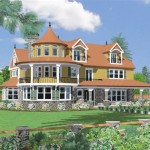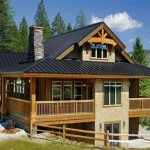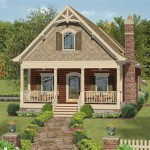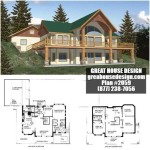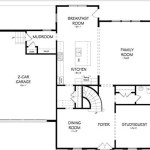Create Your Own House Plans Free: A Comprehensive Guide
Designing a home is a complex undertaking, requiring careful consideration of spatial needs, structural integrity, and aesthetic preferences. While professional architectural services offer expertise and comprehensive plans, the associated costs can be prohibitive for some individuals. Fortunately, the availability of free resources and software allows individuals to create their own house plans, albeit with certain limitations. This article explores the concept of designing house plans without incurring initial design costs, outlining the key aspects, potential benefits, and essential considerations involved.
The term "free house plans" can be misleading. It typically refers to resources that provide either pre-designed templates that can be downloaded and modified or access to free versions of design software that allow users to create their own plans from scratch. The latter approach requires a significant investment of time and a degree of technical proficiency. Pre-designed templates, while convenient, may not perfectly align with individual needs and site-specific constraints. Therefore, a realistic understanding of the available options and their limitations is crucial before embarking on this process.
Understanding the Landscape of Free House Plan Resources
The internet offers a diverse array of resources that claim to provide free house plans. These can be broadly categorized into several types: websites offering downloadable templates, limited-functionality versions of professional architectural software, and online design tools with basic features. Websites offering downloadable templates typically provide a selection of pre-designed floor plans and elevations that can be downloaded in various formats, such as PDF or CAD files. These are often generic designs intended for a broad audience and may require modification to meet specific local building codes and individual preferences.
Limited-functionality versions of professional architectural software, often referred to as "free trials" or "demo versions," offer a more comprehensive design experience. These programs allow users to create their own plans from scratch, utilizing a range of tools for drawing walls, placing doors and windows, and generating 3D models. However, the free versions typically have limitations, such as restricted file saving options, watermarks on printed plans, or limited access to advanced features. These restrictions can significantly impact the usability of the software for serious design work.
Online design tools with basic features provide a simplified approach to creating house plans directly within a web browser. These tools often employ drag-and-drop interfaces, making them accessible to users with limited design experience. However, these tools typically lack the precision and advanced features required for creating detailed construction documents. They are often best suited for conceptual design and space planning rather than generating plans suitable for building permit applications.
It is crucial to critically evaluate the quality and reliability of any free house plan resource. Many websites offering free templates may contain outdated or inaccurate information. Furthermore, the plans may not be compliant with local building codes, which can lead to significant delays and expenses during the building permit process. Always verify the accuracy and completeness of any downloaded plans with a qualified professional before proceeding with construction.
The Benefits and Pitfalls of DIY House Planning
Designing one's own house plans offers several potential benefits. The most significant advantage is the cost savings associated with avoiding professional architectural fees. These fees can represent a substantial portion of the overall construction budget. By taking on the design work oneself, individuals can potentially allocate those funds to other aspects of the project, such as higher-quality materials or more elaborate finishes.
DIY house planning also allows for a high degree of customization and control over the design process. Individuals can tailor the plans to perfectly reflect their personal needs, preferences, and lifestyles. This level of customization is often difficult to achieve when working with pre-designed templates or engaging a professional architect who may have their own design aesthetic or preconceptions.
Furthermore, the process of designing one's own house plans can be a rewarding and empowering experience. It allows individuals to engage deeply with the design and construction of their future home, fostering a sense of ownership and pride.
However, DIY house planning also presents several potential pitfalls. The most significant challenge is the technical expertise required to create accurate and compliant construction documents. Designing a house involves a complex interplay of structural engineering, mechanical systems, plumbing, electrical wiring, and building codes. Failure to properly address these aspects can lead to safety hazards, structural failures, and code violations.
Another potential pitfall is the time commitment required for DIY house planning. Creating a detailed set of house plans can take hundreds of hours, especially for individuals with limited design experience. This time commitment can be particularly challenging for those who are already juggling work and family responsibilities.
Moreover, DIY house planning can be isolating and lack the collaborative brainstorming and problem-solving that occurs when working with a professional architect. A professional can offer valuable insights and suggestions that may not be apparent to an individual working in isolation. This can lead to design flaws or missed opportunities that could have been avoided with professional guidance.
Key Considerations for Creating Your Own House Plans
Before embarking on the process of creating one's own house plans, several key considerations must be taken into account. First and foremost, it is essential to have a clear understanding of one's spatial needs and lifestyle requirements. This involves carefully assessing the number of bedrooms and bathrooms required, the size and layout of living spaces, and the need for specialized rooms such as home offices or workshops.
Secondly, it is crucial to thoroughly research local building codes and zoning regulations. These regulations dictate the allowable building envelope, setback requirements, height restrictions, and other aspects of the design. Failure to comply with these regulations can result in delays, fines, and even the demolition of non-compliant structures.
Thirdly, it is essential to develop a realistic understanding of one's design skills and technical proficiency. If one has limited experience with architectural design or CAD software, it may be necessary to invest in training or seek guidance from a qualified professional. Alternatively, one may consider using a simplified online design tool or modifying a pre-designed template rather than attempting to create a complex plan from scratch.
Fourthly, the structural integrity of the design must be carefully considered. Consult with a structural engineer to ensure that the proposed design is structurally sound and capable of withstanding local weather conditions, such as wind, snow, and earthquakes. This is particularly important for complex designs or those involving large spans or unusual architectural features.
Finally, it is advisable to consult with other professionals, such as plumbers, electricians, and HVAC contractors, to ensure that the design incorporates appropriate provisions for mechanical systems, plumbing, and electrical wiring. These professionals can provide valuable insights and suggestions that can help avoid costly mistakes during construction.
While the allure of free house plans and DIY design is understandable, it is crucial to approach the process with a clear understanding of the potential benefits, pitfalls, and necessary considerations. A balanced approach, combining the cost-effectiveness of DIY design with the expertise of qualified professionals, can often lead to the best outcome.

Make Your Own Floor Plans

Impressive Make Your Own House Plans 1 Design Floor Free Home

Create Your Own Floor Plans House Design Interior Plan Programs

10 Simple Best Free And Paid House Or Room Design

Create 2d 3d Floor Plans For Free With Floorplanner

Create 2d 3d Floor Plans For Free With Floorplanner

Plan 62 1330 Sq Ft Custom Home Design Autocad Dwg And Free House Plans Maker Architectural

25 More 3 Bedroom 3d Floor Plans

Featured House Plan Bhg 8993

Duplex House Plans Free Floor

